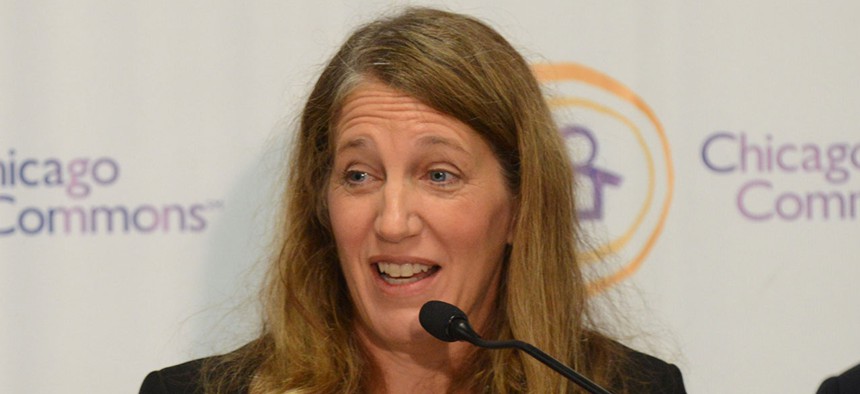
“This open enrollment is going to be tougher than last year,” HHS Secretary Sylvia Mathews Burwell said. “But while our goals may be harder to reach, we’re working smarter to reach them.” HHS file photo
HHS Says More Than 10 Million Uninsured Americans Are Eligible for Obamacare
The administration released new data on the uninsured ahead of this year’s open enrollment.
Going into the Affordable Care Act’s third year of open enrollment, the Obama administration estimates that 10.5 million uninsured Americans are eligible for private health coverage on the insurance marketplaces created by the law.
The number, based on the government’s analysis of Gallup survey data and other sources, offers a glimpse at how the law has done so far in covering the uninsured and the work that it still has left to do.
HHS also released new data on the number of people who have gained health coverage at some point since Obamacare’s coverage provisions started to take effect: 17.6 million.
Half of the 10.5 million eligible uninsured are between ages 18 and 34, the key young and presumably healthier demographic whose enrollment is necessary to keep premium increases in check. About 40 percent of them make an income of 250 percent of the federal poverty level or less, meaning they qualify for both the law’s premium tax credits as well as additional cost-sharing subsidies to lower what they pay for health care. About 19 percent are Hispanic, 14 percent are African-American, 2 percent are Asian-American, and the rest are white.
“This open enrollment is going to be tougher than last year,” Health and Human Services Secretary Sylvia Mathews Burwell said in a speech Tuesday at Howard University. “But while our goals may be harder to reach, we’re working smarter to reach them.”
The 10.5 million figure does not include uninsured people who are either eligible for Medicaid in states that expanded Medicaid under Obamacare but haven’t signed up or people who are in poverty who would have been eligible for expanded Medicaid but live in one of the 20 states that refused to expand the program.
A couple other data points from HHS underscore the challenge in signing up the remaining uninsured: Almost 60 percent said that they were either confused about the law’s tax credits or didn’t know they existed, and 50 percent have less than $100 in savings, suggesting they could struggle to afford coverage even with a nominal premium.
“We have a pretty good idea of who the remaining uninsured are,” a senior HHS official told reporters before Burwell’s speech.
HHS officials laid out some of their ideas for reaching those people. The department plans to target the uninsured in Dallas, Houston, northern New Jersey, Chicago, and Miami, which the data show have the highest number of uninsured who are eligible for marketplace coverage. It plans to use information it has gathered from last year’s email campaign—which the senior official said “has been pretty effective in terms of the cost of it and the return on investment”—and its messaging on affordability to try to refine its outreach this year.
The law also has a bigger stick to wield in tandem with the carrot of tax subsidies for the poor and uninsured. The individual mandate penalty increases in 2016 to $695 or 2 percent of income, whichever is greater, up from $95 or 1 percent of income back during the first year of enrollment
“I think you’ll also hear us speaking directly about the personal-responsibility fee,” the senior HHS official said. “It’s something we’ll be talking about this year, to make sure people understand that everybody has a responsibility to get health insurance.”






